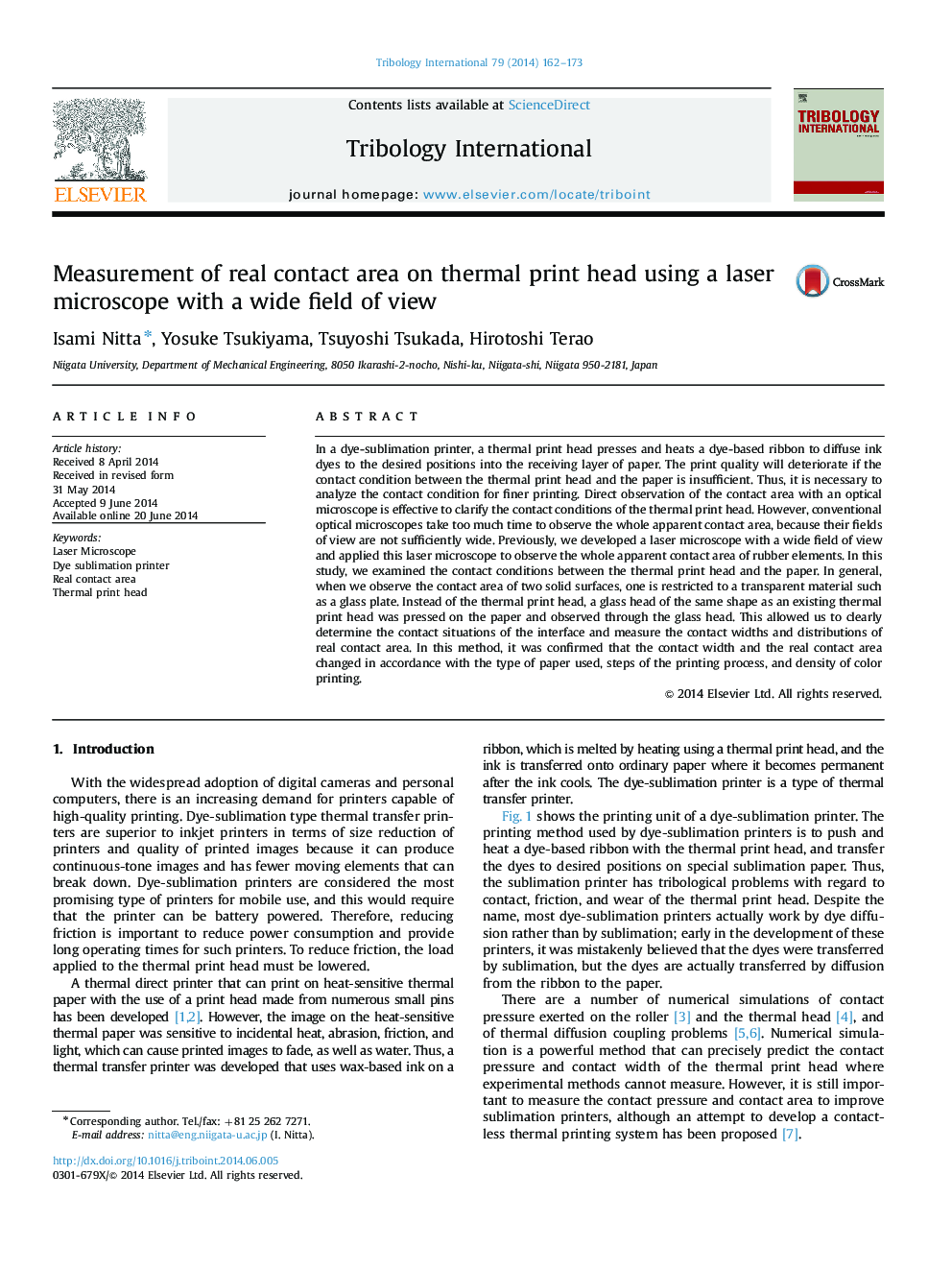| Article ID | Journal | Published Year | Pages | File Type |
|---|---|---|---|---|
| 614708 | Tribology International | 2014 | 12 Pages |
Abstract
In a dye-sublimation printer, a thermal print head presses and heats a dye-based ribbon to diffuse ink dyes to the desired positions into the receiving layer of paper. The print quality will deteriorate if the contact condition between the thermal print head and the paper is insufficient. Thus, it is necessary to analyze the contact condition for finer printing. Direct observation of the contact area with an optical microscope is effective to clarify the contact conditions of the thermal print head. However, conventional optical microscopes take too much time to observe the whole apparent contact area, because their fields of view are not sufficiently wide. Previously, we developed a laser microscope with a wide field of view and applied this laser microscope to observe the whole apparent contact area of rubber elements. In this study, we examined the contact conditions between the thermal print head and the paper. In general, when we observe the contact area of two solid surfaces, one is restricted to a transparent material such as a glass plate. Instead of the thermal print head, a glass head of the same shape as an existing thermal print head was pressed on the paper and observed through the glass head. This allowed us to clearly determine the contact situations of the interface and measure the contact widths and distributions of real contact area. In this method, it was confirmed that the contact width and the real contact area changed in accordance with the type of paper used, steps of the printing process, and density of color printing.
Keywords
Related Topics
Physical Sciences and Engineering
Chemical Engineering
Colloid and Surface Chemistry
Authors
Isami Nitta, Yosuke Tsukiyama, Tsuyoshi Tsukada, Hirotoshi Terao,
